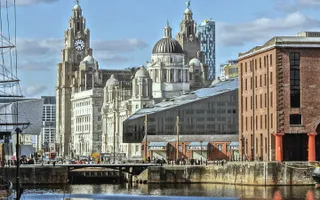As we walk along our canals, it is not apparent that their story is in some way inextricably entwined in the exploitation of people through slavery – both from the money derived from the transatlantic slave trade invested in their construction, and through the cargoes produced by enslaved people that the canals were built to carry including sugar, cotton, and tobacco.
Worldwide demonstrations have seen a righteous anger at the fact that slave traders were still heroised and historical links to slavery left unexamined by white people and institutions. A number of prominent statues have been defaced, toppled, or hurriedly removed, including a statue of Robert Milligan, a Scottish slave-owner in Jamaica whose wealth built the West India Docks, on Canal & River Trust land. The statue was originally commissioned by the West India Docks Co. and unveiled in 1813. The removal of Milligan's statue deftly draws attention to the relationship between British canals and the history of slavery.
Important stories waiting to be uncovered and made known
Museums and heritage organisations are well aware that the narratives they present might exclude potential audiences and ‘hide' histories that many people today identify with. The series of events that have made up the Black Lives Matter movement has led to many organisations re-evaluating the stories they tell.
We recognise that our National Waterways Museum Collection and Archives are not representative of all those whose lives that have been touched by the canals and that there are important stories waiting to be uncovered and made known. As custodian of the waterways, and despite ongoing work with communities, we have lacked specific in-depth knowledge about the linkages between canal history and the transatlantic slave trade.
A review of academic literature
In spring 2020, our Honorary Research Fellow, Dr Jodie Matthews, began her work on a review of academic literature on this subject as a starting point to mapping this.
Jodie's review investigates how we can learn more about the profits of slavery being invested in the building of canals in Britain. There are many cities that we are used to associating with the history of canals whose industrial development was linked to the slave trade, such as Liverpool and Manchester.
The review also reminds us that the canals transported goods produced by enslaved people, including indigo, tobacco, rice, cotton, and sugar. Canal, port and boat records offer researchers the chance to think more about the journey of commodities from plantation to consumers in Britain.
A short essay by Dr Caroline Bressey
Prominent historical and cultural geographer, Dr Caroline Bressey, has written a short essay in response to this review which you can read here.
Her essay highlights the fact that this review is part of British economic history underpinned by the slave trade and is different to, but overlaps with, the investigation into lives which made up the Black presence in Britain. She concludes with the sharp reminder of: 'how few of these stories are known and how many individuals are still waiting to become part of the deep histories that run through the still waters of Britain's canals'.
This review is the start of a journey for the Trust to reveal the hidden histories of the waterways by exploring the links with the ignominious trade in people of African descent.





